Though not yet a household name in Japan, with her stunningly exotic looks and feminine physique it’s easy to draw comparisons to former tennis “It Girl” Anna Kournikova or current tennis beauty queen Maria Sharapova. The fact that she is registered with famed Japanese talent agency Horipro, and models on the side, only reinforces these similarities. But make no mistake about it, Anastasia Malhotra is not just another pretty face. She has had to overcome many unique challenges that arise with having come from a multicultural background in ethnocentric Japan, and has become a composed and elegant professional tennis player with the solid determination and tenacity to rise to the top of the Japanese tennis world.
Born in Japan to a British father of Greek and Indian descent and a Japanese mother, Anastasia lived in England for seven years before returning to her homeland of Japan at the age of eleven and turning pro at the tender age of fifteen. It is this international upbringing that makes this nineteen-year old such an intriguing addition to the traditional tennis scene in Japan.
In a recent interview, Anastasia recalls the difficulty of returning to Japan and attending regular Japanese junior high school without being able to speak any Japanese. “People called me gaijin but I didn’t even know what that meant at the time so I wasn’t offended,” notes Anastasia. Recollecting the difficulty of learning the language she explains, “With Japanese, in order to truly learn the language you have to become it. It’s the only language I know of where you have to change your being.” Japanese society is renowned for having a socially acceptable response for every social situation where even a slight deviation can sometimes result in causing an un uncomfortable situation to develop. Because of this, many times people are expected to mask their true feelings to maintain the “wa” or harmony. Anastasia alludes to this by noting that, “In Japan, people are not necessarily straightforward in terms of what they are thinking, which can make things confusing.”
Rather, it is through subtle social cues that true feelings and thoughts are revealed. The ability to decipher what the other person is trying to communicate without having them explicitly tell you is known as ishindenshin or aunnokokyu in Japan and is something that takes many years to master, if ever.
Still, despite these complex cultural barriers, Anastasia managed to make friends quickly at school and to successfully learn the Japanese language. She attributes this ability to adapt swiftly to new environments as a useful skill that has helped her performance on the tennis court. “In terms of my game, I learn things quickly, so I’m more versatile and creative when I play.” As a left-handed player, Anastasia has a wide variety of shots that can catch her opponents off guard and put them on the defense.
The fact that she has trained in both England and Japan has also sharpened her tennis skills as she has been exposed to the varying styles of play between the two countries. “In Japan the focus is on baseline play whereas in England there is a focus on different forms of play,” clarifies Anastasia. While her father was her main coach in England, currently she is playing with under the guidance and watchful eye of Hatanaka Kimiyo, the prominent owner of Big-K tennis club and well-respected captain of the Japanese tennis team. With Hatanaka’s assistance, Anastasia has been able to find some big name sponsors to help support her tennis endeavors, but it hasn’t necessarily been an easy transition into the professional world of tennis.
Up until quite recently, Anastasia used her father’s surname, “Malhotra,” in professional tournaments in Japan. However, the Japanese Tennis Association (JTA) preferred that she use her mother’s Japanese surname of “Ito” as she is playing for Japan. Although Anastasia understands the position of the JTA and is incredibly proud of her Japanese heritage, she reveals why she would prefer to continue to use her father’s surname, “To me, my surname represents my family and it is an honor for my relatives and family back in England as well my dad, who was also my coach and stuck by me, to see the family name up on the scoreboard and on the trophy.” She also astutely adds, “Name and identity are so closely intertwined, it’s astonishing that people would have issues with my surname. If a Japanese player was playing for England, they would never be expected to change their last name from `Tanaka’ to `Smith’ so why should I be expected to?”
Though she diligently defended her right to use “Malhotra,” it was becoming an increasingly complex issue to deal with. At sanctioned tournaments, on the official list of players her name was sometimes listed under a different nationality or even had no nationality listed next to it. In order to put a stop to the confusion and maintain “wa” with the JTA, Anastasia agreed to play under her mother’s maiden name in Japanese tournaments and is officially listed under the name of “Ito M. Anastasia.”
The Japan Tennis Association may not have initially welcomed multi-cultural Anastasia with completely open arms, but the foreign press, particularly that of India, were quick to turn her into a media darling. Last year, Anastasia visited India for the first time to compete in the $50,000 Challenger Match in New Delhi. Standing out from the other players because of her Indian roots, she found herself fielding interviews from prominent Indian newspapers and receiving offers to appear on Indian TV shows on a daily basis. She was even asked to play for India, but politely declined the offer as she counts Japan as being her home country. “My heart and soul are my family. My parents, brother and grandparents all live in Japan so I consider Japan my home. Besides, the lifestyle here suits me better. Living in Japan is very safe and the people are courteous. I’m also friends with the other Japanese players and believe that things are changing for the better. I find the younger generation much more open minded, which is encouraging,” explains Anastasia.
Still, that didn’t make it an easy decision to make. According to Anastasia, “The offer was quite tempting. Out of all of the countries I have lived in or visited, India was the one place where I could really blend in. In Japan, even though I’m half Japanese, I don’t look Japanese so I’m not treated the same as a regular Japanese person. But in India, people were speaking to me in the Indian language and I felt really comfortable there.” Though her mixed nationality prevents her from completely blending into the ethnically homogenous Japanese tennis world, she does make a note of the many advantages that comes with an international heritage. “The fact that I have a mixed nationality does attract a lot of attention and fans. I’ve also been able to make friends with players all over the world since I speak fluent English. And I believe I’ve been given the opportunity to model because I look different from everyone else,” concedes Anastasia.
However, when asked if she will pursue modeling as a profession, she responds by explaining, “Modeling is quite fun because I usually don’t have the time to wear makeup and look all nice so it’s exciting to get all dressed up for a change, but my ultimate goal is to become the number one tennis player in the world.”
Since becoming a professional tennis player in 2005, Anastasia has steadily climbed in the official ranking every year. Currently, Anastasia is ranked number 480 in the world and 20th in Japan, but it is with firm determination that she has her set her personal goals of breaking into the top 200 this year and playing in the Grand Slams next year. To help achieve this goal, Anastasia is playing in more international tournaments this year. As of the end of May, she has participated in tennis tournaments in Egypt, Korea, India, as well as in Japan.
While many of today’s top women tennis players such as Serena and Venus Williams have risen to the top in part because of their large stature and muscular physique which allows them to deliver a powerful serve and an even more powerful return, Anastasia is more focused on further developing her overall play and perfecting her technique, which is reminiscent of tennis players from the past like Chris Evert and Monica Seles. It will be exciting to see how Anastasia’s game will evolve in the years to come as she climbs up the ranks.
When asked about what she would like to do after she fulfills her tennis goals, Anastasia reveals a surprisingly simple but admirable answer. “Eventually, I would like to get married and have a family of my own. My father owns an English school and both he and my brother teach English. I also would like to make a difference and since I really like children I would like to teach English to kids as well.”
Whatever the future holds for Anastasia, a large part of her identity and professional tennis experience has been influenced by her multicultural background and as Japan becomes more multiracial as more Japanese travel abroad and more international marriages are on the rise, she clearly exemplifies how different cultures can blend together and add to the richness and uniqueness of life’s experiences.
Story by Erika Wiseberg
From J SELECT Magazine, August 2009



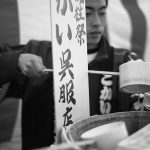
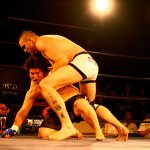

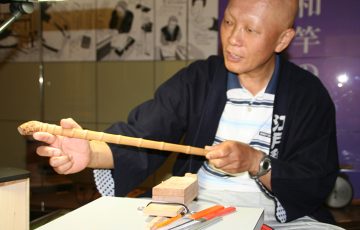
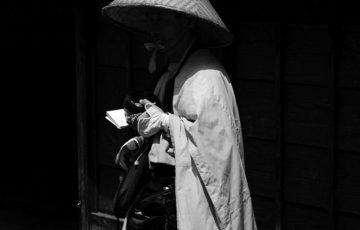


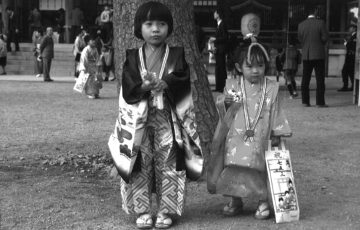

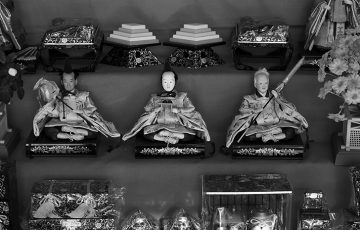


Recent Comments